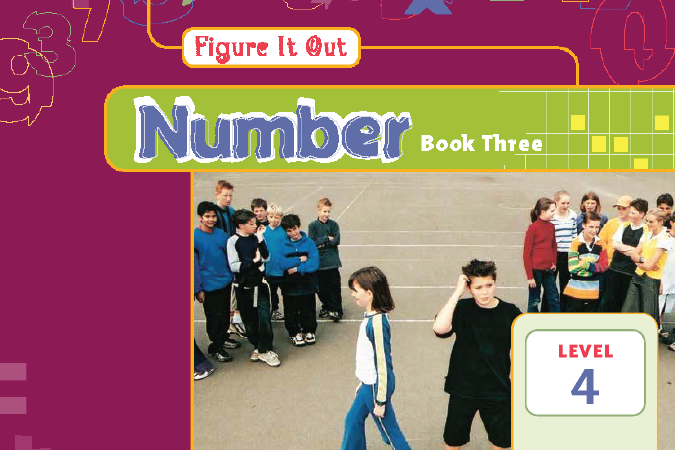Cycling on ...
This is a level 4 number and level 4 measurement link activity from the Figure It Out series. It is focused on finding fractions of time, calculating average speed, and interpreting a timetable. A PDF of the student activity is included.

About this resource
Figure It Out is a series of 80 books published between 1999 and 2009 to support teaching and learning in New Zealand classrooms.
This resource provides the teachers' notes and answers for one activity from the Figure It Out series. A printable PDF of the student activity can be downloaded from the materials that come with this resource.
Specific learning outcomes:
- Find fractions of time.
- Calculate average speed.
- Interpret timetable.
Cycling on ...
Achievement objectives
NA4-2: Understand addition and subtraction of fractions, decimals, and integers.
Required materials
- Figure It Out, Link, Number, Book Three, "Cycling on ..." pages2 0-21
See Materials that come with this resource to download:
- Cycling on activity (.pdf)
Activity
Activities 1 to 3
In these activities, the students have to work with a lot of data as they find differences between distances, find differences between times, find fractions, calculate average speeds in kilometres per hour, and calculate percentages.
The students need to be aware that although both the data about time and the data about distances are presented in the same decimal format, they actually represent different things. The distance data is in standard decimal format, that is, the figure to the right of the decimal point represents tenths. But the time data is not in this same format. Here, the figures to the right of the decimal place represent the number of minutes, that is, sixtieths. So when the students want to find the distance travelled in stage 4, they can calculate 16.2 – 11.9. But in finding out how long this stage took to cycle, they will get the wrong answer if they calculate 11.09 – 10.59. Instead, they will have to work out that the difference in time between 10.59 and 11.00 is 1 minute, and then there are another 9 minutes to get to 11.09, a total of 10 minutes altogether. You might like to ask the students to compare this way of recording time with the method used on page 12 of the students’ book.
Several questions in these activities ask the students to find an average speed in kilometres per hour. This rate shows how far someone would travel in 1 hour if their speed was evened out over the whole hour.
For Activity 4, question 3a, the students need to use the information from earlier questions in this activity and from Activity 2. From their earlier answers, they will quickly work out that the group A riders were 13 minutes faster over the same distance than the group C riders.
One way of working out the percentage for question 3b is to think of it in terms of how much faster group A were than group C. Using the average speeds, 24 km/h ÷ 18 km/h = 1.3, so group A were 1/3 or 331/3% faster than group C.
Activity 1
1.
a-b
Stage |
Time taken (min.) |
Distance (km) |
|---|---|---|
1 |
8 |
3.6 |
2 |
8 |
3.6 |
3 |
13 |
4.7 |
4 |
10 |
4.3 |
5 |
4 |
1.2 |
6 |
16 |
7.4 |
7 |
21 |
7.2 |
2.
3 hrs
3.
a. 80 min. (1 hr, 20 min.)
b. 4/9
4.
a. 24 km/h
b. Stage 6
c. Answers will vary. Possible answers could include the impact of tiredness, hills, gravel roads, corners, and compulsory stops.
Activity 2
1.
24.6 km/h, which rounds to 25 km/h
2.
a. 6.5 km
b. 22.9 km/h, which rounds to 23 km/h
3.
23.8 km/h, which rounds to 24 km/h
Activity 3
1.
11.47 a.m.
2.
a. 23 min.
b. 21.39 km/h, which rounds to 21.4 km/h (1 d.p.)
Activity 4
1.
a. 10.31 a.m.
b. 18.57 km/h, which rounds to 19 km/h
2.
17.64 km/h, which rounds to 18 km/h
3.
a. Group A (6 km/h faster)
b. 331/3% faster, which rounds to 33% (to the nearest whole number)
4.
Answers will vary. Group A ride further than the other two groups (this could be considered an advantage or a disadvantage). Group C were 13 minutes slower than group A over the same route, so biking at the end of the camp may have been more tiring than biking at the beginning.
The quality of the images on this page may vary depending on the device you are using.


